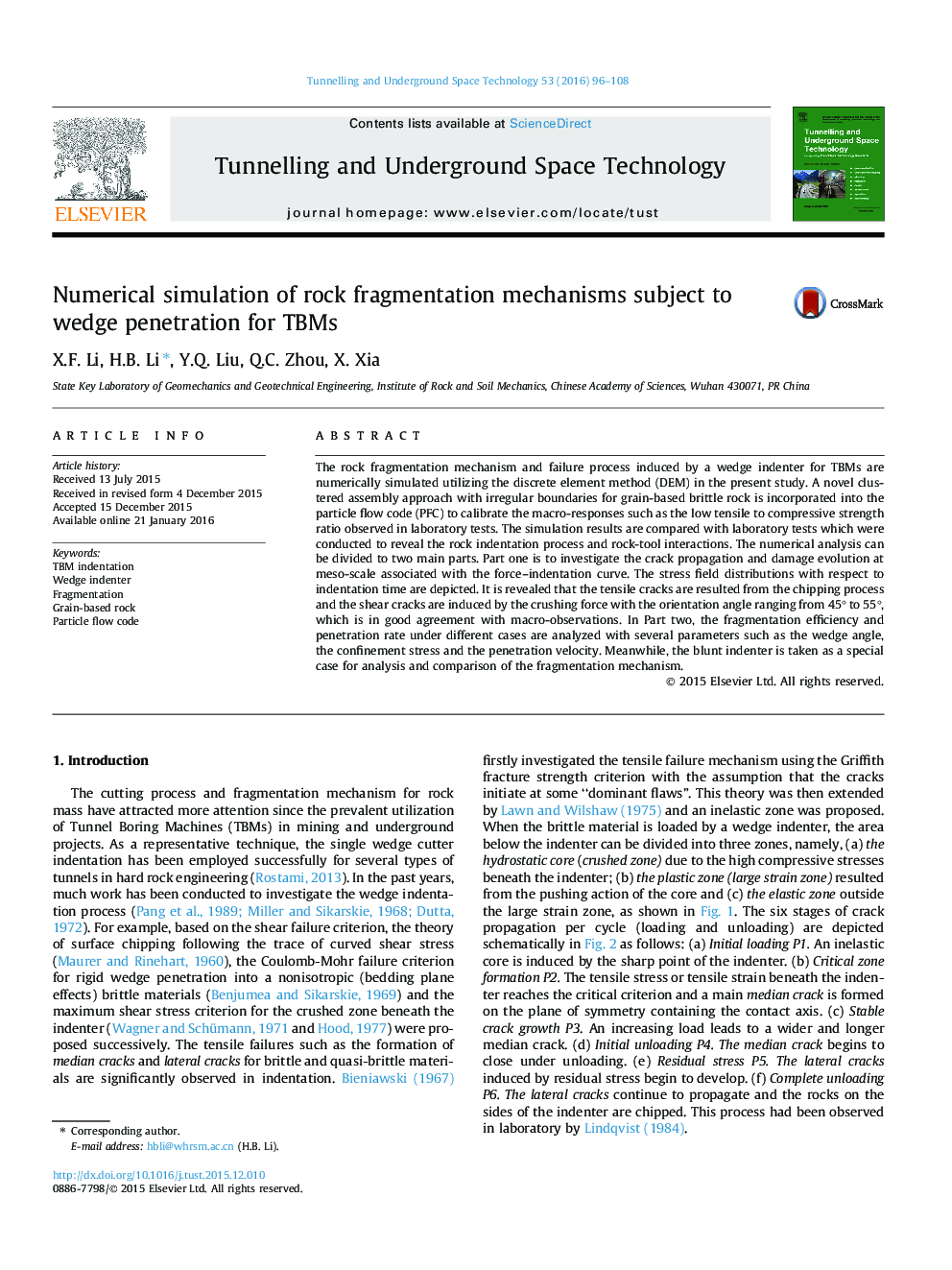| Article ID | Journal | Published Year | Pages | File Type |
|---|---|---|---|---|
| 310618 | Tunnelling and Underground Space Technology | 2016 | 13 Pages |
•DEM is utilized to simulate the process of TBMs indentation.•Clustered model for crystalline rock with PFC is firstly proposed.•Laboratory tests are conducted to calibrate the numerical results.•Fragmentation processes are analyzed on the meso-level.•Effects of wedge angle, confinement stress and penetration velocity are discussed.
The rock fragmentation mechanism and failure process induced by a wedge indenter for TBMs are numerically simulated utilizing the discrete element method (DEM) in the present study. A novel clustered assembly approach with irregular boundaries for grain-based brittle rock is incorporated into the particle flow code (PFC) to calibrate the macro-responses such as the low tensile to compressive strength ratio observed in laboratory tests. The simulation results are compared with laboratory tests which were conducted to reveal the rock indentation process and rock-tool interactions. The numerical analysis can be divided to two main parts. Part one is to investigate the crack propagation and damage evolution at meso-scale associated with the force–indentation curve. The stress field distributions with respect to indentation time are depicted. It is revealed that the tensile cracks are resulted from the chipping process and the shear cracks are induced by the crushing force with the orientation angle ranging from 45° to 55°, which is in good agreement with macro-observations. In Part two, the fragmentation efficiency and penetration rate under different cases are analyzed with several parameters such as the wedge angle, the confinement stress and the penetration velocity. Meanwhile, the blunt indenter is taken as a special case for analysis and comparison of the fragmentation mechanism.
